Australia & New Zealand
Queenstown, NZ – Focusing on collaboration to make change, Sustainable Queenstown is tracking their impact on sustainability initiatives as well as sharing and co-thinking. Destination Queenstown has also engaged in this same model to focus on regenerative and sustainable tourism and making strides which benefit all actors in the community as well as visitors. Aiming to be the first destination to be carbon zero by 2030, they also have orchestrated a ‘give back’ program.
Take 3 for the Sea – Started in 2009, this partnership in collaboration with Destination Central Coast, has spread awareness about plastic pollution. The program encourages visitors to protect the environment by taking at least three pieces of discarded litter home with them when they visit the area’s abundance of natural areas. The simple idea has spread throughout the community, state, country and the world. The program has prevented 56 million pieces of litter from decomposing in the world’s oceans, educated over 1 million students and recently expanded educational programs to schools in 11 countries on four other continents.
New Zealand and sustainable tourism – This video shows what a tourism company can do to run a national park more sustainably in New Zealand.
Byron Bay Sustainable Streets Program – works towards fostering community level sustainability. Efforts include rainwater harvesting, using local food, solar power and energy efficiency.
Northern Australia Along with a 5 year strategic plan for sustainable tourism, this destination offers toolkits and educational information to help organizations in the area move forward.
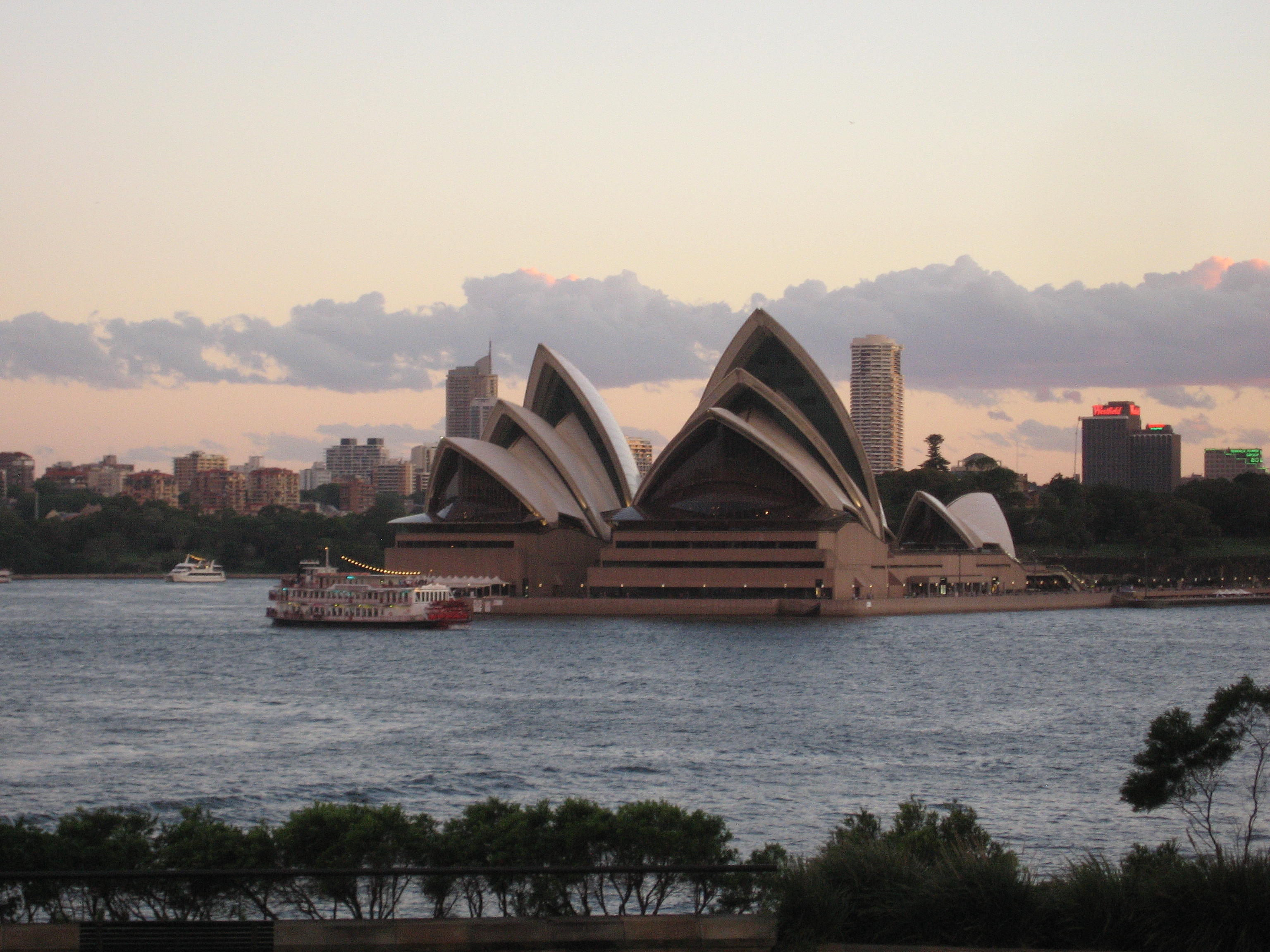
Show more
Greening Melbourne’s hotels
The City of Melbourne introduced an innovative environmental program to help city hotels to cut energy, water and waste management costs. The Savings in the City program aims to provide leadership, support, recognition and advice to hotels in the municipality. It will help hotels to identify economically viable actions they could take to reduce energy consumption and operating costs.
Hotels are the first sector to be targeted in the Savings in the City program, with 11 being among the top 200 water users in the City of Melbourne. And the hospitality sector – including accommodation and food providers – generates up to 18 per cent of all waste in the municipality, so there’s plenty of scope top make meaningful savings.
Intercity Transportation in New Zealand is aiming to be more sustainable. New Zealand’s only national public transport network, InterCity operates New Zealand’s largest passenger transport network with the combined networks of InterCity, GreatSights and Gray Line. Together InterCity and GreatSights connect to more than 600 destinations nationwide, with over 130 services every day. InterCity Group (NZ) Limited has an active Responsible Tourism programme based on core operating philosophies of Manaakitanga and Kaitiakitanga. In line with these philosophies we have an active programme of engaging in our communities and mitigating the impacts from resource usage. We are proud to be rated as an Enviro Silver rated operator by Qualmark.
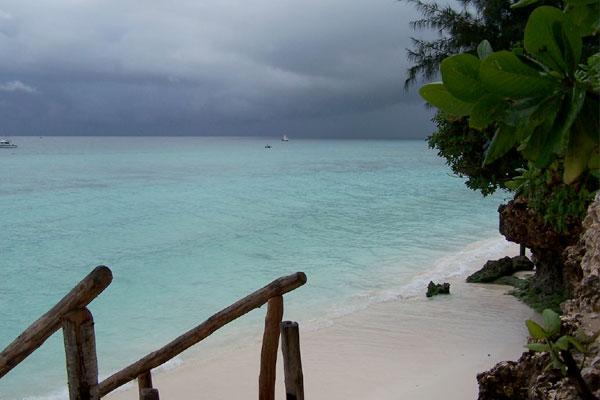
South Pacific
Tetepare – The largest island in the southern hemisphere and one of the only islands that has never been logged, conservation measures have been widely recognized here.
Maldives – With the impacts of climate change and sea level rise, this small island aims to become the first carbon neutral destination by 2020. Of course, they aren’t taking into consideration their travel into this equation but…
Bay of Bengal Green Model for Eco-Tourism
This case study presents a green model for eco-tourism as it is currently in place at the Welcomgroup Bay Island (WGBI) hotel in Port Blair, the capital of the Andaman & Nicobar Islands. The model concentrates on a so-called four-R’s strategy, which includes Reduce, Reuse, Recycle and Rethink of procedures and policies for the hotel. (quoted from the World Business Council for Sustainable Development (WBCSD) , 2005)
Asia
Maldives fair wages – Commencing in 2022, the Maldives, the government has enforced a minimum wage for citizens working across all industries and sectors. This also includes the tourism industry that employs a large proportion of local workers. The wage is set at 8,000 Maldivian rufiyaa (519 U.S. dollars) per month. This introduction benefits 50% of employees across the country. That is more than 54,000 employees, including 13,000 employees working in tourism.
Bali– The island of Bali developed a plan of action for sustainable tourism in 2005. Many efforts have been noted, however there is no conclusive documentation on implementation and some issues are still of concern.
Vietnam’s green map – This ecotourism initiative represents national parks, nature reserves and proposed protected areas spread over mountains, lowland forests, wetlands, islands, coral reefs and 3,440 km of coastline. Locked within these natural pockets is an endemic and indigenous biodiversity that makes Vietnam a truly special country. An estimated 12,000 species of vascular flora occur in Vietnam. The organisation’s goal for the ecotourism map is for international tourists to take note of Vietnam’s spectacular natural composition, whilst being responsible, respectful and considerate of local communities. By engaging local people through the use of guides, home- stays and various modes of transportation, it is hoped that tourism will serve to increase local communities’ awareness of their natural environment whilst providing them with alternative sources of income. All sale proceeds from the map go directly to support Vietnamese primate conservation. For further information, please contact: huong.lan.hoang@ffi.org.vn



Europe
Faroe Island’s Closed for Maintenance program is a volunteer program aimed to help regenerate sites and do maintenance. Sites are closed for three days where visitors help to build fences, pathways and fix signage. Over 55 projects have been done since the program started in 2019. It is now so popular they have approximately 5000 applications for 100 spots.
Norway‘s westernmost lighthouse needed maintenance so a program which offers free accommodation in exchange for doing tours and selling waffles is a unique way to give back and provide educational experiences.
Orkney, Scotland has undertaken a climate vulnerability index to help them manage the effects of tourism. Orkney has the largest number of cruise ships in the UK.
Amsterdam, Netherlands is home to a multitude of organizations that offer the opportunity for travellers to help become part of the solution by fishing for plastic in the canals. Not your typical sightseeing excursion – guests can partake in fishing plastic from the 65 miles of canals. See Plastic Whale
Ljubljana, Slovenia – winner of the European Mobility Week Award twice, first in 2003 and again in 2013. Green capital of Europe for 2016, this city has 46% of it covered by green space. In the past five years, these pedestrian areas have been increased by almost 620%
Barcelona – heritage conservation, sustainable transportation and now bridges that eat pollution
Lake District, UK – showcasing sustainable tourism initiatives including low carbon cottages, sustainable transportation efforts and footpath erosion
Burren and Cliffs of Moher, Ireland – working with over 45 tourism enterprises to achieve certification, the park is now a recognized tourism destination. Recognized as a geopark the area promotes sustainable tourism, has its own sustainable tourism criteria and strategy working towards conservation and bringing benefits to the community
SouthWest Tourism (UK)
SW Tourism became the first destination to obtain a gold level certification under the Green Tourism Business Scheme. They received a World Travel and Tourism Tourism for Tomorrow award for sustainable tourism in 2009. The destination has a comprehensive sustainable tourism plan complete with marketing and training assistance for businesses. Visitors are educated about their impacts and how to make more sustainable choices. They developed a green tourism toolkit and have assessed the consumer to determine their needs and wants for green tourism.
Show more
Ecocomptor – a Finnish initiative to help hotels communicate their sustainability initiatives. As an average hotel room in a midrange hotel produces between 5-20 kg of CO2 per room, there is a need to reduce emissions. Based on a French word ‘to count’ the idea is to save on operating costs, reduce the impact on climate change and manage consumption with reporting.
European Sustainable Tourism Prize
The Province of Rimini was awarded with the first European Sustainable Tourism Prize, “Carmen Díez de Rivera” for its LIFE-Environment Project “Strategies and Tools towards Sustainable Tourism in Mediterranean Coastal Areas”. The award from the EU is divided into public and private initiatives for sustainable tourism. Some objectives include new management systems, planning and managing tourist destinations and implementing new management of tourist destinations in accordance with their environmental, social, cultural and economic values.
Cinque Terra Sustainable Tourism Project
The territory of the Cinque Terra located on the coast of northeastern Italy has established a sustainable tourism project to protect the culture, heritage and environment. Cinque Terra is famous for the five villages that are accessible only by train or trail: Monterosso, Vernazza, Corniglia, Manarola and Riomaggore, however the large number of tourists has a significant impact on the sustainability of the region. The region was recognized as a National Park in 1999 and as a UNESCO protected territory since 1997. The sustainable tourism project has established an Environmental Quality Brand for accommodation facilities, a cinque terra card, guidelines for tourists and public information about conservation. In order to control tourist numbers, a Cinque Terra Card is provided which includes access to all paths, nature observations centres, botanic paths, picnic areas, and bird watching areas. Tourists exploring the region can purchase a 1, 3 or 7-day card which also provides unlimited access to the train and bus between villages. The fee goes to protect the trails, marine and national park and maps, train and ferry times as well as a list of main business sectors participating in the scheme are accommodations which implement energy and water saving techniques as well as the purchase of local produce, recycling and using sustainable transport. An easy to read pamphlet offers visitors and businesses in the region simple, straightforward and easy options to reduce impact, support local economies and protect the fragility of the region.
For information on a participating hotel, please see Hotel Câe Adrean located in Manarola at http://www.cadandrean.it /for more information.
Kolarbyn Ecolodge, Sweden Sometimes called Sweden’s most primitive hotel, the lodge works to protect endangered species in Scandinavia. There is no electricity and all water comes from a local spring. Working to offer a unique ecotourism experience, it is not for the lighthearted.
Sunart Oakwoods Initiative
This initiative aims to create and re-establish 2500 square miles of native woodlands. The woodlands will provide ecotourism type activities (walking, cycling, wildlife hides, canoeing, etc.) and will train, employ and house local people. The site will also be managed by local people in collaboration with the Forestry Commission, Scottish Natural Heritage, Highland Council, Lochaber Enterprise and special interest groups. Ten years since the initiative started, it plays a large tourism role. Over 10,000 m of new paths have been constructed, new interpretive panels and Gaelic trails have been established and an integrated tourism strategy set out.
Africa
Sustainable tourism in Kenya – learn what the Travel Foundation is working with local communities
Il Ngwesi Community Trust, Kenya – is constructed with local materials, profits directly support local communities and is one example of successful community based tourism. Their efforts have won them numerous awards
Vamizi Island Offering luxurious eco-lodges in Mozambique, made up of ten low-impact beach houses. The lodge tries to sustain livelihoods by providing a boat for islanders to patrol the waters for illegal fishing, and steps are being taken to manage the elephant population so that human and pachyderm can coexist The construction uses almost entirely local materials – timber, thatch and stone all come from the mainland or the islands themselves – thus providing help to the local economy. Although not yet off the grid, the property is working towards being truly sustainable.
Three Camel Lodge Rated by National Geographic as one of the top 50 lodges worldwide, this accommodation offers environmental and social sensitivity. Powered mainly by wind and solar, it serves as a base for scientifc and wildlife research and is the first-of-its-kind cooperative agreement with the Bulgan Sum Township and Gobi-Gurvansaikhan National Park authorities.


Show more
Grootbos Private Nature Reserve and lodge,South Africa
A luxury camp two hours north of Cape Town, Grootbos is more than just 5 star accommodation and a nature reserve. The nature reserve was instrumental in setting up the Walker Bay Fynbos Conservancy in 1999 and currently consists of 21 landowners, who manage approximately 12 000 hectares of fynbos. The Reserve has been running the longest running vegetation survey to date, which was started in 1997. Grootbos is not just about conservation as they also operates a private foundation that offers a number of different sustainability initiatives. The ‘Growing the Future’ initiative trains 8 men and women every year in the growing of vegetables and fruit, beekeeping and the principles of successful animal husbandry. Since 2003, they have had over 80 graduates. The ‘Green Future’ project provides annual, practical-based training programs for unemployed local people in the fields of landscaping, horticulture and ecotourism. The project is designed to develop nature-based sustainable livelihoods for people from the local community, and so engender a conservation ethic in surrounding areas. They also run a ‘Spaces for Sport’ initiative that offers a multipurpose facility which is considered a community development project. The site was chosen due to its unique position in the centre of three diverse communities in Gansbaai: Masakhane Township is comprised of about 12 000 black residents, the Blompark community has about 5000 coloured residents, and the Gansbaai white community consists of about 8000 residents. More than 300 kids every year are trained here by our coaches and volunteers. Guests visiting Grootbos can also participate. Grootbos runs a project called ‘Future Trees’. Guests are given the opportunity to plant a tree in a patch which was previously Milkwood Forest that was decimated in a fire in February of 2006. Approximately 1000 trees have been planted to date. Each guest receives a tree planting certificate with the co-ordinates of where the trees have been planted. The GPS co-ordinates are uploaded unto Google Earth and guests have the opportunity to track their tree’s progress.
CAMPFIRE in Zimbabwe
Tourism development has helped many of Zimbabwe’s poorer rural communities as part of the Communal Areas Management Programme For Indigenous Resources (CAMPFIRE). Through CAMPFIRE, foreign visitors buy licences to hunt wildlife within certain quotas. As well as keeping wildlife numbers at sustainable limits, the profits from these licences and the sale of meat and skins of the animals is ploughed back into local communities to build new schools, wells and health clinics. Is tourism under threat in Zimbawe as there have been fuel shortages and many tourism resorts are owned by white landowners and community tourism initiatives feel they cannot attract tourists. For more information, see this case study illustrated by Global Eye at http://www.globaleye.org.uk/secondary_spring2002/focuson/case1.html
The Red Sea Sustainable Tourism Initiative (RSSTI)
One of the first tourism programs in the Middle East to adopt principles of sustainable development, this programme was funded by USAID. The Tourism Development Authority (TDA) in Egypt plans to build approximately 200,000 new hotel rooms in the next 15 years near and around the Red Sea and Sinai Peninsula (source: greenhotelier). The RSSTI has a mandate for sustainable tourism and advocates their mission by working with the TDA and encouraging environment and socially responsible projects which involve local participation in decision making, eco-efficiency, the use of EIA’, Environmental Management Systems, etc. In addition, a set of economic instruments have been developed to encourage developers to be more responsible.
Responsible Tourism in West Africa
A recent opportunity to explore West Africa offered a unique way for cultural interaction to take place. As many westerners wish to visit rural communities for history and cultural interaction, giving money to a village may interrupt the economic balance or status. In the southern Burkinabe village of Kontambougou, tour guide leaders chose to bring chairs for the elders in the community as a gift. Elders in the village of Kontambougou used to stay in their huts as they aged but with the gift of chairs, they sit out in the village and socialise and interact with the other villagers. The villagers welcome the westerners by showing them their hospitality through music and dancing and the chief’s son explains the village structure and formation to the tourists. Another way to bring something back to the village was by bringing photographs of the elders that were taken on the last visit so that the village had a record and photograph of the old chiefs and significant elders.
Chumbe Island Coral Park, Tanzania
Chumbe Island is the first privately established and managed marine park in the world and takes serious note in its sustainability operations. Its income from eco-friendly visitors finances conservation and environmental education programs for local schools and other groups. The 7 palm thatched bungalows, while comfortable and beautifully unique, are also built entirely out of local material and designed with solar lights, rainwater catchment, solar-heating of shower water and composting toilets. Chumbe has won the 2000 UNEP 500 Roll of Honour Award, 2004 TODO socially responsible tourism award and 2004 Responsible Tourism Award in addition to many others. For more information, check out www.chumbeisland.com.
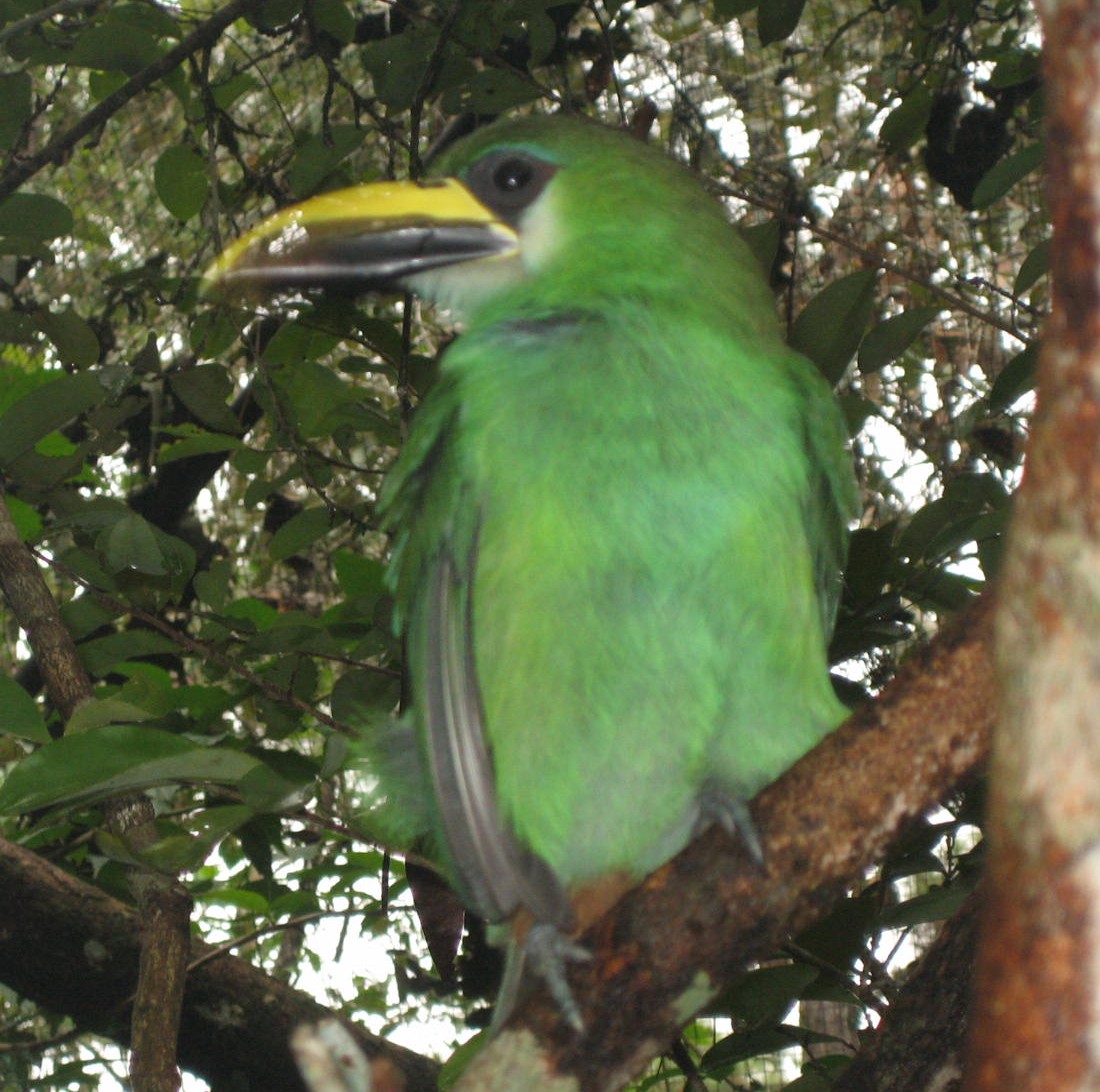
South and Central America
Finca Bella Vista Treehouse, Costa Rica – a planned, modern, sustainable treehouse community. A number of initiatives include fresh food, working with local communities, organic farming and permaculture.
Samasati Nature Reserve, Costa Rica.Built without the use of heavy machinery, no clearing of land or cutting of trees, the retreat only employs local people and aims to give money back to the local community. Offering eco and adventure trips, the retreat has undertaken multiple measures to become more sustainable.
Almonds and Coral, Costa Rica. Awarded with the highest level of eco-certification, Almonds and Coral has attempted to integrate their hotel into the natural surroundings and conserve nature. Practices include using green building design, recycling, no chemical fertilizers or weed killers, garbage is separated into organic matter, recyclable, reusable, and non recyclable or reusable. A special custom made sewage treatment system was designed by a sanitation engineer for the hotel and strict conservation and environmental policy exists
Show more
Cristalino Jungle Lodge (Amazon, Brazil) The lodge is private forest reserve in the Southern Brazilian Amazon rainforest. Along with offering ecotourism and adventure tours, its main objective is to preserve the rain forest and to contribute to conservation efforts in part of the Amazon that is rapidly changing. The lodge, in conjunction with the Ecotourism Development Program of the Brazilian Amazon (Proecotur) has developed a long term sustainability strategy for the area.
Santa Lucia Lodge, Ecuador
In Ecuador, ecotourism has been helping to preserve and sustain Santa Lucia Lodge. A runner up for the 2005 WTTC Tourism for Tomorrow Awards and the 2004 Responsible Tourism Awards, the lodge offers a multitude of elements that help sustain the local area and community. Examples include: staff training for native guides, courses in cooking, hospitality and administration and capacity building; conservation (having now planted native trees in 20 hectares of land). More information can be found at www.santaluciaecuador.com
Costa Rica and renewable energy – working towards achieving a clean energy milestone
North America
Revelstoke, B.C. Canada – Focusing on regenerative tourism, Revelstoke is engaging with visitors to give back in their shoulder season. Thanksgiving Back is an opportunity to be part of Revelstoke’s strong community by volunteering with local organizations on registered volunteer projects. As a thank-you, volunteers from outside the community get accommodation costs covered during the event dates. The program takes place on the weekends leading up to Thanksgiving and aims to foster a connection between visitors and the community, support local non-profits, drive visitation in the shoulder season, and educate visitors on the effort that goes into maintaining a community.
Baltimore, USA – Diversion by Donation program at the city’s convention centre is tackling waste by donating unwanted materials and leftover food to local non profits, city agencies and other organizations that could use them. In 2023, the conference center diverted nearly 300 tons of event waste from landfills, which is almost 40% of all garbage generated at the venue.This included about 24 tons of material donations, over 50 tons of food, 7 tons of animal feed, 61 tons of scrap metal, and more than 47 tons of cardboard bales. It is estimated that this program has saved its partner organizations an estimated 17,500 U.S. dollars in costs that would have been associated with purchasing the materials themselves.
Haliburton, Ontario, Canada – the Rotary Club in the region provides six free bicycles for anyone to use. Riders, who must be over the age of 18, use an app to unlock bicycles and place a security deposit. Helmets are also provided with the bikes. About 400 people have used the program since it started in 2022. In 2023, an average of 16 bikes were used per week. The 2024 summer is seeing 28 bikes unlocked per week.
Vancouver, BC, Canada – Vancouver tries to make the case for thinking local and going green
Joggins Fossil Cliffs World Heritage Site, NS – It is a unique community management system that is now being replicated by other World Heritage Site nominees. The visitor centre is LEED Gold certified built on a reclaimed mining site and there is a key focus on programs for and with local residents. It is also the only employer in this rural community and has created new local employment and partnerships with local and regional tourism agencies.
Long Point Biosphere Reserve– is an example of an attraction as well as a conservation effort. It also takes into consideration the environmental impact of transportation to reach the site, a key sustainability consideration. Located in Norfolk County, Ontario, Canada it is a UNESCO/ MAB biosphere reserve focusing on projects including turtle poaching, Causeway improvement and research.
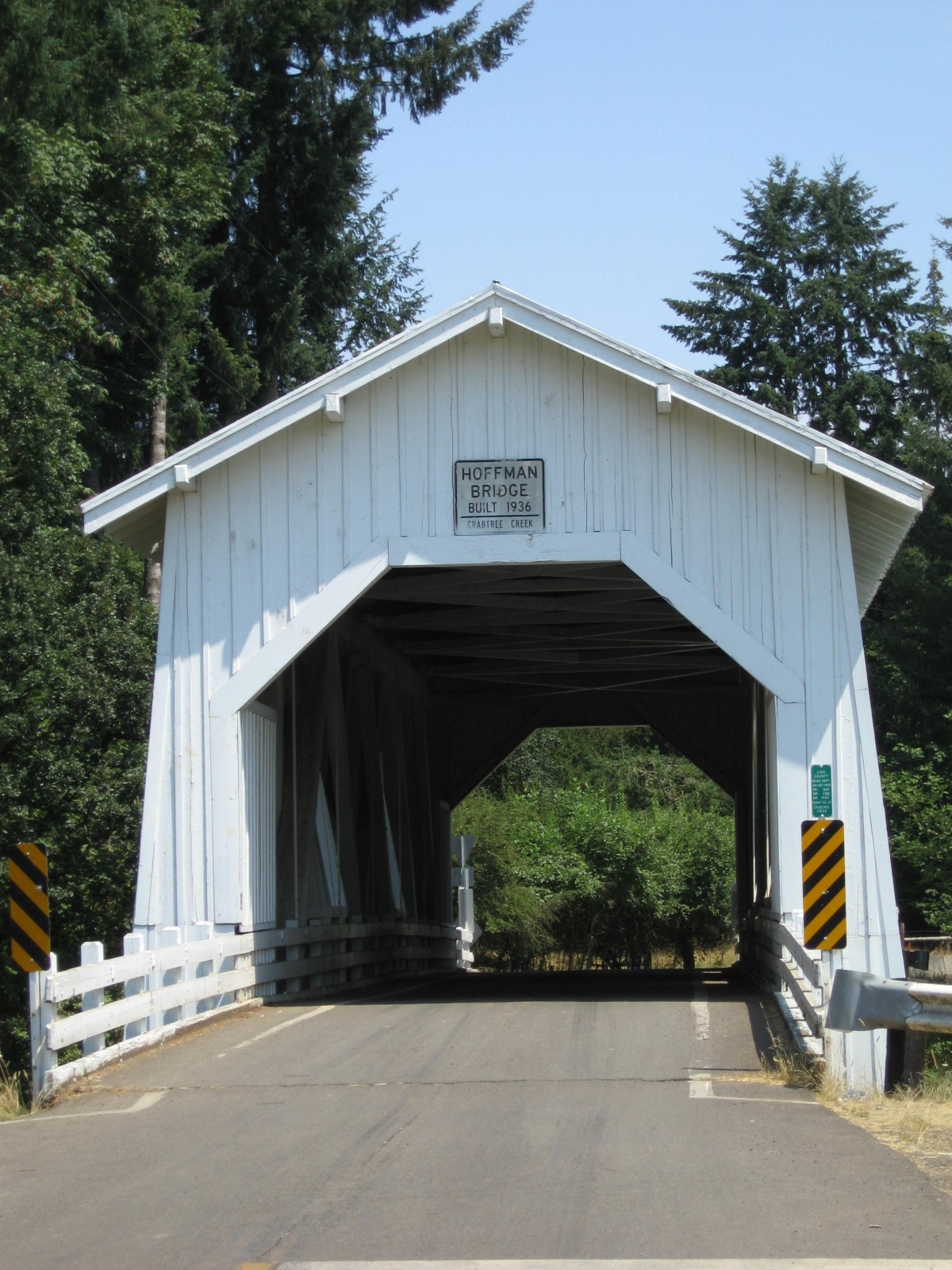
Show more
Downtown Vegas – an effort to revitalise downtown Las Vegas with a $350 million injection to revitalise the arts and give back to the community.
Hilton Head – Although touted as a sustainable destination after hosting the Ecotourism and Sustainable tourism conference in September, 2011, their sustainability is questionable. The island is host to a population of 38,000 but has 2.5 million visitors per year and the population swells to 100,000 on a busy weekend. With so many visitors, waste is an issue, however, there is currently no recycling or composting on the island and ground water depletion is over 60%. There is no public transportation and no sustainable tourism master plan or overarching policies in place.
The island, does however, warrant some notable achievements. Zoning restrictions have accomplished set backs for building and maximum building heights and the town enforces the Land Management Ordinance which dictates the style and governance of buildings. They also are responsible for the preservation of many trees as they are one of the major land owners on the island and therefore have protected many roadsides and created green buffer zones. A major golf destination, it has agreed to not use any water on their courses and the island has one of the best beach management programs in North America. A 2% tax is taken as part of the 5% hotel tax and goes directly to beach management. The island has won awards for the best beaches in the United States. For further information, see the island’s beach management plan.
Frontenac Arch Biosphere Reserve – This three year project is an initiative to assess and develop the Frontenac Arch Biosphere Reserve area (which includes the Rideau Corridor and Thousand Islands regions) as a location and destination for sustainable tourism.
Prince Edward Island National Park of Canada
The Park is undertaking a number of initiatives to protect and preserve the natural and cultural resources found in the area. Along with a beach facility which was developed using a sustainable design concept, it also has a 10kW wind turbine that provides 100% of the electricity requirements to the Cavendish Campground. This year, the park will install a 50kW wind turbine that will provide the necessary power for a “grid-free” new administration building and compound (Parks Canada, 2008)
Tofino Cedar Corner Development
A real example of achieving the triple bottom line. Tofino sits at the entrance to Clayoquot Sound, a globally unique biosphere now designated by UNESCO as a Biosphere Reserve, it attracts approximately 1 million visitors per year. With the environmental and social pressures stemming from the tourist population and the fragile environment, this is a good example of multiple sustainable considerations. Built from 100% recycled timber and equipped with the latest water-saving, energy efficient and power alternative features, their philosophy is the following “Ultimately a successful business is a business that: a) makes money; b) exists symbiotically with its community; c) has an absolute minimum negative impact on the environment; and d) becomes a working model of a profitable, socially conscious, ‘green’ business showcased to the world”. For more information on their building, investment and management practices and Leadership in Energy and Environmental Design (LEED) program
San Francisco gone green San Francisco has pulled out all the stops – LEED certified buildings, reducing waste, diverting from landfill, acknowledging parks and green space and their contribution to quality of life and tourist enjoyment!
Travel Green Wisconsin Travel Green Wisconsin is a voluntary program that reviews, certifies and recognizes tourism businesses that have made a commitment to continuously improve their operations in order to reduce their environmental and social impact. The program, set up by the Wisconsin Environmental Initiative (WEI) and the sustainable tourism ad-hoc committee made up of local businesses, NGO’s and governement agencies aims to develop a voluntary environmental certification program for the Wisconsin tourism industry.This voluntary program helps businesses evaluate their operations, set goals and take specific actions towards environmental, social and economic sustainability. The project is currently being piloted.
Hawaii Bio – Beetle 100% Recycled Vegetable Oil Powered Cars
Now when you travel to Hawaii, you can hire one of the first environmentally friendly cars – powered by 100% recycled vegetable oil.


Caribbean
Turtle tourism in Dominican Republic – An example of how companies and countries can engage tourists with their products in an entertaining and educational way. This example illustrates how a man made a living from saving turtles and educating tourists.
Nature Conservancy Caribbean Challenge – is an initiative to protect the Caribbean. So far 50 new marine/coastal protected areas have been designated. The aim is to conserve at least 20% of their nearshore marine and coastal environments in national marine protected areas by 2020. The aim is to get the 40 million tourists who visit the Caribbean to help donate to the cause.
Jamaica’s project to improve coastal towns
As a section of the Ministry of Tourism in Jamaica is the Tourism Product Development Company (TPDCO) is “to develop and improve the tourism product, to position Jamaica as a preferred destination and to ensure that tourism is sustained as a major contributor to the development of the economy”. As one of the initiatives, the Government of Jamaica project to improve resort towns. Some of the aims of this project are to -Clean, upgrade and maintain the resort towns, concentrating on designated project corridors.
- Increase the security presence in order to reduce visitor harassment
- Implement environmental and tourism awareness programmes in schools and communities
- Improve the facilities at the cruise ship piers.
Show more
3 Rivers Eco Lodge & Sustainable Living Centre
The 3 Rivers Eco Lodge & Sustainable Living Centre, reiterates in 2006 its commitment to sustainability after earning this award in 2005. Located in Dominica, this family business lives by a fundamental goal: to live in harmony with, yet has as little harmful impact as possible on the unspoiled natural beauty of its surroundings and community.
Their philosophy is driven by a belief in their role to protect and enhance the environment for guests, as well as the residents of the local community. Keeping in line with their goals, every aspect of the hotel has the environment in mind. The management embraces a sustainable lifestyle, minimizing the use of all resources, and monitoring all systems.
The sun powers the entire property. Even the water supply is pumped from the river using a solar powered pump, which works in silence to avoid disturbing the surrounding natural habitats. Likewise, solar hot water heating systems are used. To minimize water consumption, gray water is treated and then re-used in the garden and campers use dry toilets.
The hotel composts all kitchen and garden waste, and uses that compost to grow as much organic food as possible without the use of chemicals or fertilizers. A truly original invention is the modification of a pick up truck that has been retrofitted to run on used vegetable oil as well as diesel fuel. With the ‘cooking oil truck’ they have reduced harmful emissions by some 93%, and are able to re-cycle oil that had been previously discarded by local restaurants in local rivers and ravines. Whenever possible, the hotel avoids purchasing packaged goods. The hotel shops locally, recycles and uses biodegradable products, and tries to keep waste products to a minimum. Water, electricity, gas, solid waste and paper consumption are monitored daily to continuously find new ways of reducing usage.
An important aspect of 3 River’s philosophy is to involve the local community. Employees come from local villages, and they are trained in sustainable living. As an Eco-Lodge, the hotel owners feel that community-based tourism is essential in order to ensure that their local friends benefit from the hotel’s existence. Bearing this in mind, the hotel offers a number of local community based activities for the visitors’ enjoyment, which, at the same time, help many native people earn money to provide for their families. The activities give guests a true taste of life in Dominica, as seen by a Dominican, and are as innovative as they are engaging. They include:
- Learning traditional farming methods and how to make & taste one of Dominica’s national dishes – Calalou Soup.
- A day at an organic herb farm, discovering traditional herbal medicines & remedies, and tasting various bush teas.
- Coffee and cocoa preparing and roasting – where tourists can take some home at the end of the day.
- Visits to the local village primary school – getting to know the kids, sharing experiences with them and learning the local history.
- Band practices with the local Reggae and Calypso stars – The Blazing Squad.
- Learning to make ancient knitting or flower crafts, among others.
Middle East
Sustainable tourism in Turkey?
The project aims to establish “sustainable tourism” in the Belek Tourism Centre. Betuyab’s goals and activities are realized through cooperation among the investors, the local inhabitants, the official association and establishments, and the relevant ministries (Ministry of Tourism, Ministry of Environment, Ministry of Health, Ministry of Forestry etc.). Read about their achievments and lessons learnt.
The Siwa Sustainable Development Initiative, Egypt
The Siwa Environmental Quality Initiative (EQI) offers a Shali lodge, ecotourism activities, organic agriculture products, women’s artisanship and other offers which were developed based on consultations with the local community and other stakeholders. EQI designed and implemented the commercial ventures with the aim of promoting economic development in Siwa that is in harmony with its sensitive environment and that revitalizes its unique cultural heritage.
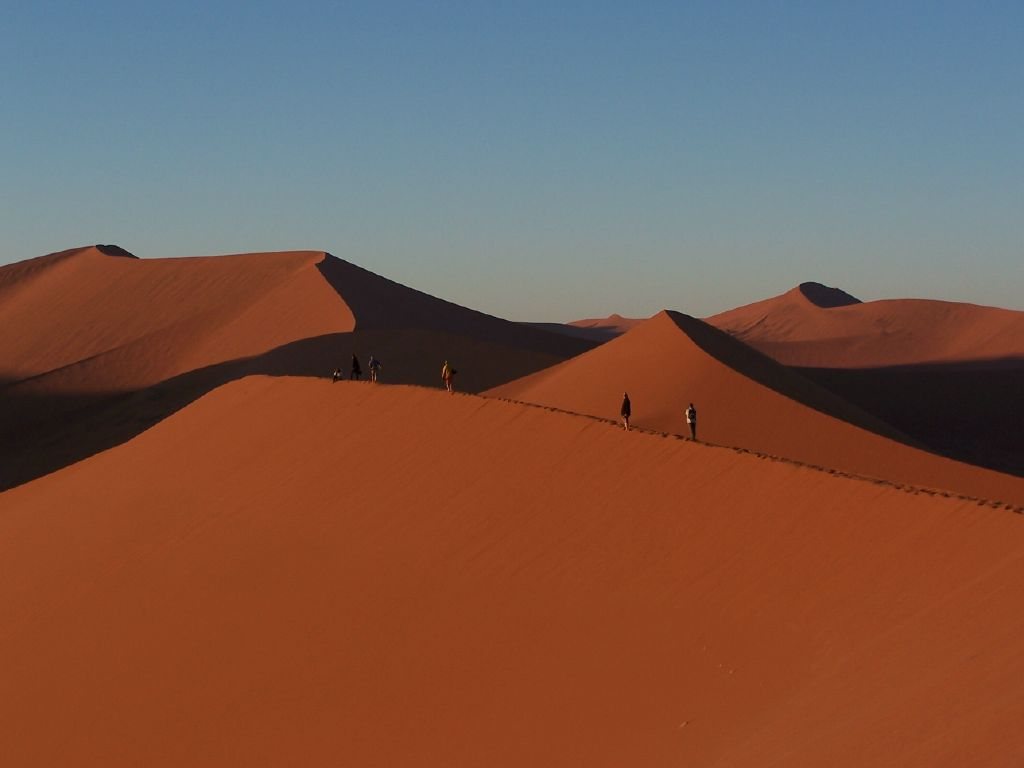
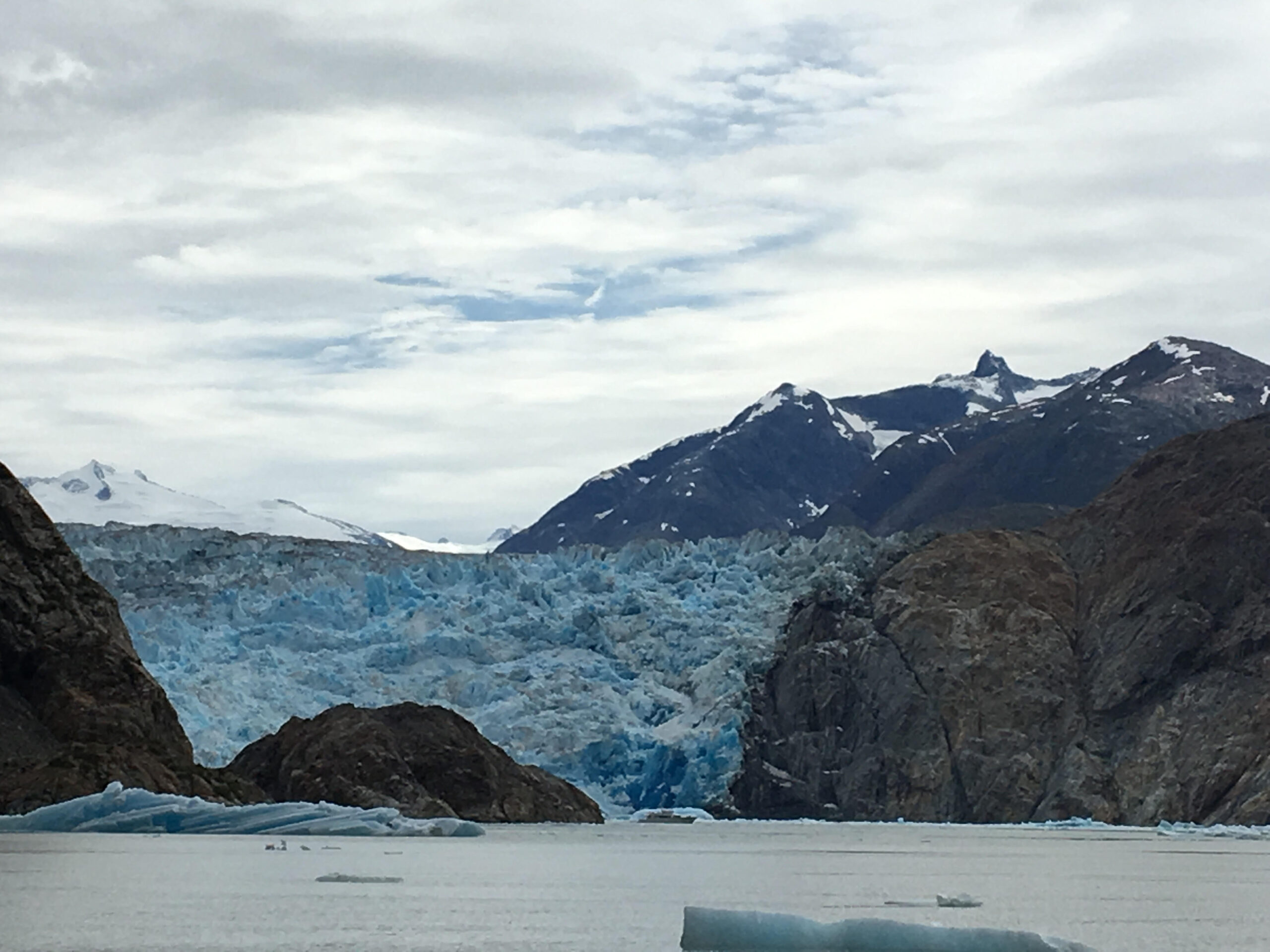
Arctic
Arctic Tourism – Sustainable Tourism Good Practices
‘Tourism development and tourist activities – in the Arctic and elsewhere – become sustainable when a business is not only concerned about its economic success, but also looks at environmental and social aspects of its activities.’ For more information on benefitting the local economy, operating in a responsible manner and more, check out the above link.
